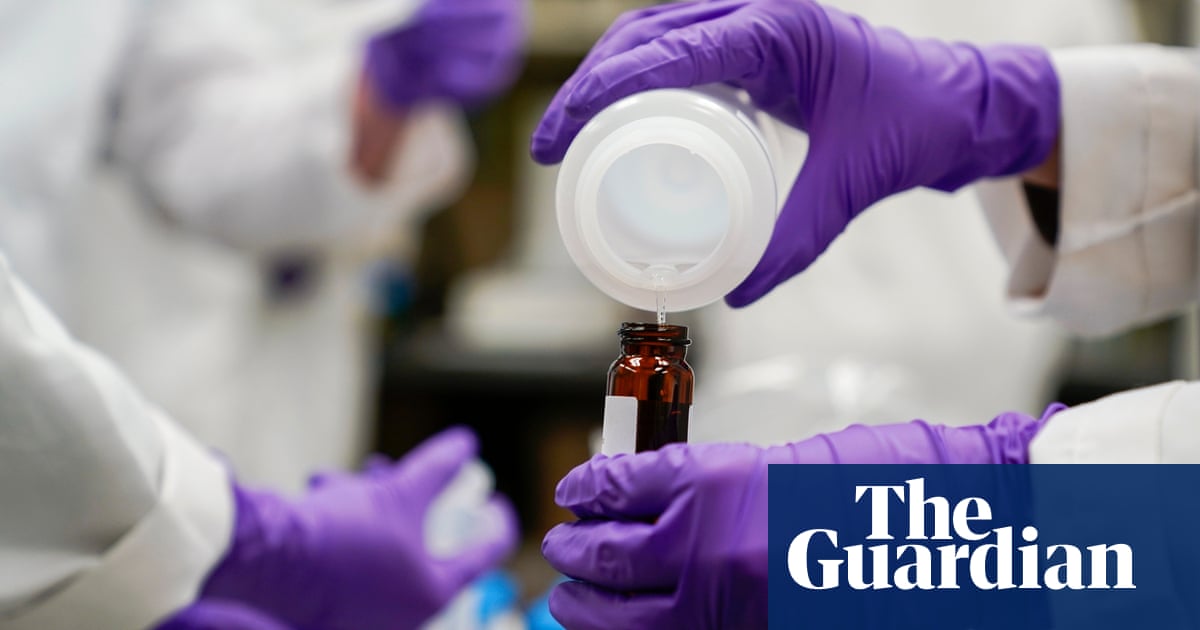The US Environmental Protection Agency has set legally enforceable drinking water limits for a group of the most dangerous PFAS compounds, marking what public health advocates hailed as “historic” rules that will dramatically improve the safety of the nation’s water.
PFAS, known as “forever chemicals”, are ubiquitous in the environment and thought to be contaminating drinking water for over 200 million people across the US. Any exposure to some highly toxic varieties of the compounds is considered a health and cancer risk.
The agency’s action marks the first time in 27 years it has put in place new drinking water limits for contaminants, and the rules are part of the Biden administration’s broader effort to rein in PFAS pollution.
“Americans have been drinking contaminated water for decades, but today’s action will finally get these toxic chemicals out of our water,” said Melanie Benesh, vice-president for government affairs at Environmental Working Group, which tracks PFAS water pollution across the globe, in a statement.
Officials said the rules will reduce exposure for 100 million people and help prevent thousands of illnesses, including cancers. Michael Regan, the EPA administrator, said the rule is the most important action the agency has ever taken on PFAS. “The result is a comprehensive and life-changing rule, one that will improve the health and vitality of so many communities across our country,” said Regan, who will announce the rule in Fayetteville, North Carolina, on Wednesday.
PFAS, or per- and polyfluoroalkyl substances, are a class of about 15,000 chemicals often used to make products resistant to water, stains and heat. They are called “forever chemicals” because they do not naturally break down, and are linked to cancer, liver problems, thyroid issues, birth defects, kidney disease, decreased immunity and other serious health problems.
After years of issuing health advisories, the EPA on Wednesday set maximum contaminant levels (MCLs), which are the highest level at which a contaminant can be in water. Critics say PFAS’ dangers have been known for years and the EPA has been slow to respond.
Between 2016 and 2022, the EPA’s advisory health limit was set at 70 parts per trillion (ppt) for PFOS and PFOA, two commonly produced compounds used for decades.
Last year, after science showed no level of exposure to the two chemicals in drinking water is safe, the EPA set non-enforceable advisory health limits of 0.02 ppt and 0.004 ppt for PFOA and PFOS, respectively.
“This reflects the latest science showing that there is no level of exposure to these contaminants without risk of health impacts, including certain cancers,” the EPA wrote.
The new enforceable limits for PFOA and PFOS are four ppt each, the lowest level at which water-testing technology can reliably obtain readings. The EPA noted in a release that the law requires it to consider feasibility and water treatment costs in addition to health risks.
It also set limits of 10 ppt for any combination of three other PFAS compounds, including PFNA, PfHxS, and HFPO dimer acid, more commonly called GenX. For any combination of those three compounds and PFBS, the agency set a variable limit.
EPA scientists calculated that the new limits will result in thousands of fewer birth-weight related infant deaths, kidney cancer deaths, bladder cancer deaths, and deaths from cardiovascular disease.
Though the rules only address several PFAS compounds, the technology water utilities are installing will address many of the compounds. However, the technology does not address some of the newly discovered “ultra short chain” PFAS that are not well studied. Public health advocates say the problem highlights the need to regulate PFAS as a class and prohibit their non-essential uses.
Water utilities have long opposed the rules because they did not want to have to pay for upgrades, which they say will cost billions of dollars and lead to increased bills for customers.
The proposed limits established early last year contributed to a wave of utility lawsuits aimed at PFAS producers such as 3M, DuPont and Chemours. The companies settled some class actions, agreeing to pay up to $15bn to help fund upgrades to municipal water filtration systems.
However, more lawsuits are playing out as water utilities or well owners not covered by the class actions sue. The Biden administration also made billions of dollars available though the Inflation Reduction Act, but the cost to upgrade the nation’s water systems could be as much as $400bn. In part citing the regulatory and legal environments, 3M announced last year it would stop making PFAS.
Over the last year, EPA has periodically released batches of utility test results for PFAS in drinking water. Roughly 16% of utilities found at least one of the two strictly limited PFAS chemicals at or above the new limits. These utilities serve tens of millions of people. The Biden administration, however, expects about 6-10% of water systems to exceed the new limits.
Water providers will generally have three years to do testing. If those test exceed the limits, they’ll have two more years to install treatment systems, according to EPA officials.



